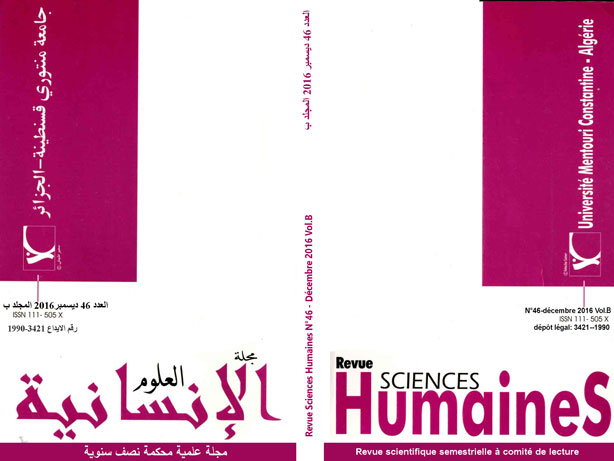The Effect of Using Simulation Activities on Developing Algerian EFL Students’ Speaking and Listening Proficiency
Keywords:
simulation activities, speaking proficiency, listening proficiencyAbstract
Crystallising Comprehension, retaining long-term outcomes, and raising the rate of interest have put extra up-to-date demands on EFL teachers. These demands have led teachers to look for recent effective innovations in language teaching. Recently, there has been much demand for the active learning techniques to encourage learners step one foot outside the stereotyped learning pattern. The need for a self-generated communication has completed the picture for teachers. By consensus, simulation came to remedy EFL learners need for communication and convey the teachers’ aim. Thus, the aim of this study was to implement the simulation activities in English language teaching to second year EFL students at University of Constantine 1. A quasi experimental method was used to test the efficacy of simulation in developing EFL learners’ speaking and listening proficiencyand a sample compromised two experimental groups participated in the study. After analysing the pre-test and post-test results, the findings revealed that simulation has successfully developed the EFL learners’ speaking and listening proficiency with greater effective impact of simulation activities on listening than on speaking proficiency.Downloads
References
Bachman, L. (1990). Fundamental considerations in language testing.Oxford: Oxford University Press.
Barker, L. L., & Gaut, D. R. (2002).Communication (8th ed.). Boston, MA: Allyn and Bacon.
Brown, H. D. (2001).Teaching by principles: An interactive approach to language pedagogy (2nd ed.). New York: Longman.
Buck, Gary. (2001).Assessing listening.Cambridge: Cambridge University Press.
Bygate, Martin. (1987).Speaking. Oxford: Oxford University Press.
Canal, M. (1983).From communicative competence to communicative language pedagogy. In Richards, J. and Schmidt, R. (eds.), Language and Communication. Harlow: Longman.
Celce-Murcia, M.; Dornyei, Z. and Thurrel, S. (1995).Communicative competence: A pedagogically motivated model with content specifications. Issues in Applied Linguistics, 6 (2). Retrieved from http://www.zoltandornyei.co.uk/uploads/1995-celce-murcia-dornyei-thurrell-ial.pdf
Field, John. (2008). Listening in the language Classroom. Cambridge: Cambridge University.
Fulcher, G. (2003).Testing second language speaking. London: Pearson Longman.
Galaczi, E. (2005). Upper main suite speaking assessment: Towards an understanding of assessment criteria and oral examiner behaviour, Cambridge ESOL Research Notes 20, 16-19.http://www.cambridgeesol.org/rs_notes/rs_nts20.pdf
Harmer, Jeremy. (2007).The practice of English language teaching. 4th ed. Harlow, England: Pearson: Longman.
Henning, G. (1987). A guide to language testing: development, evaluation, research. Cambridge, Mass.: Newberry House Publishers.
Jones, K. (1982).Simulations in language teaching. Cambridge University Press, Cambridge.
Jones, L. (1983).Eight simulations. Cambridge: Cambridge University Press.
Ladousse, G. P. (1987). Role play. Oxford: Oxford University Press.
Littlewood, W. (1981).Communicative language teaching. Cambridge: Cambridge University Press.
O’Malley, J. Michael, & Valdez Pierce, Lorraine. (1996).Authentic assessment for English language learners: Practical approaches for teachers. London: Longman.
Richards, Jack C. (2008).Teaching listening and speaking: From theory to practice. Cambridge: Cambridge University Press.
Shaw, Carolyn M. (2010).Designing and using simulations and role-play exercises.The International Studies Encyclopedia. (Ed) Robert A. Denemark. 15. Nov. 2015. DOI 10.1111/b.9781444336597.2010.x
Thornbury, S. (2005). How to teach speaking. Harlow, England: Longman.
Vandergrift, Laurens. (1997).The Cinderella of Communication Strategies: Reception Strategies in Interactive Listening. The Modern Language Journal, 81(4), 494-496.Retrieved from http://www.jstor.org/stable/328892
Weir, Cyril J. (2005).Language testing and validation: An evidence-based approach. Palgrave Macmillan: Great Britain.
Xiaoxian, Guan & Yan, Jin. (2010). Interactive listening: Construct definition and operationalization in tests of English as a foreign language.Chinese Journal of Applied Linguistics, 33(6), 22.












